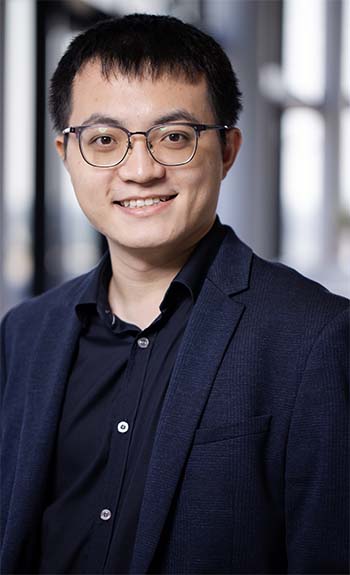By Matthew Hall – South Africa faces an unparalleled power crisis – and access to backup power is no longer a nice to have; it’s practically a human right.
No matter their size, South African businesses can no longer afford to not have backup power. Yet every environment has different requirements that impact the amount of backup power needed.
For example, a solopreneur who works from home might consider a power bank to power a WiFi router for a load-shedding block. On the other hand, an enterprise with a data centre that runs business applications will need an installed inverter and UPS solution with ample battery power.
With these scenarios in mind, here is a rundown of three different backup power solutions your business might want to implement – before it’s Stage 8 lights out.
Inverters
Both an inverter and a UPS provide backup power. They both store electricity in a battery when power is available, and when the power is out, various devices can access said stored power from the battery. However, they work differently.
Electricity flows as either AC or DC power, and when power flows through the mains, an inverter ‘captures’ it in the form of an AC current, which it stores in a battery. An inverter must first convert the AC power to DC power so it can be stored. Devices can’t run on DC power, so the inverter converts DC back to AC and supplies it to the devices until the grid power is back on. Once grid power is restored, the inverter stores AC power (as DC power) in its battery.
With all the converting going on, there’s a power-supply lag before the switch-over to the correct current. Devices that can’t tolerate the lag will get damaged, such as an on-premise data server or a hospital ventilator – and that’s where a UPS comes in.
UPSes
A UPS can provide a continuous supply of power – no switch-over lag included. UPSes provide protection against surges and voltage fluctuation, and electronic devices with sensitive circuitry need a UPS rather than an inverter.
However, UPSes should only be used for a short period of time, as they keep the power going before a generator or inverter kicks in.
Keep in mind that a fully installed solution, which could be a combination of inverters, UPSes, and batteries, will give you more power for longer while giving you the ability to power an entire business for a period of time – which can be extended by expanding the number of batteries installed.
Battery-powered generators
Unlike their diesel counterparts, these have no fumes and can be used indoors and outdoors. Some models boast significant capacity and can run for several hours of heavy-duty use. These generators can be expanded with additional batteries or solar panels to power multiple devices, fridges, microwaves, and more.
Having power that’s not dependent on diesel availability – which is at the mercy of everything from geopolitics to rough seas – is becoming imperative.
- Matthew Hall is Chief of Products at Rectron South Africa
Beat loadshedding and rising power costs
The time is right for companies and individuals to secure their electricity supply.
 This is the word from Nick Wang, Africa Senior Account Executive at EcoFlow, who says that the reason for EcoFlow’s existence is to power a new world; and to help people solve their energy problems.
This is the word from Nick Wang, Africa Senior Account Executive at EcoFlow, who says that the reason for EcoFlow’s existence is to power a new world; and to help people solve their energy problems.
In South Africa, EcoFlow recently partnered with a local distributor, Rectron, adding its renewable energy products to the company’s portfolio of power solutions.
Recognizing Rectron’s well-known excellence in after-sales service, EcoFlow also has certified the distributor as its technical service partner.
Rectron is currently offering EcoFlow’s RIVER and DELTA portable power station product lines to the South African market. Both product lines come with the basic, Max and Pro models.
EcoFlow solar panels will also soon be available locally.
EcoFlow’s patent X-Stream technology enables batteries to recharge up to 80% in just one hour, and to 100% in 1,6 hours.
This takes care of one of the biggest issues during high loadshedding stages that batteries are unable to fully charge between outages. “With X-Stream, batteries will recharge between outages even in Stage 8 loadshedding,” Wang points out. “And, because the X-Stream technology increases charging efficiency, it takes less electricity to recharge.”
Currently, EcoFlow is switching to lithium iron phosphate (LiFePO), starting with DELTA Pro, offering users longer product life cycles of up to 10 years. By the end of 2023, EcoFlow’s portable power station product lines will be fully committed to LiFePO batteries.
Most of the solutions also offer the option of extra batteries, which can double or triple output time.
The X-Boost feature allows users to power devices with higher-rated powers without overloading, so they can power almost all household appliances and in some cases, power tools.
And EcoFlow products can be recharged from multiple sources: the grid, petrol or diesel generators, or solar.
In addition, they can be monitored and controlled via the EcoFlow app.
Partnering with Rectron
The decision to partner with Rectron seems to have been almost inevitable, says Wang.
“We realised that Rectron has a well-developed sales channel network and customer resources. We both knew we had met the right partner at the right time, so the negotiations were smooth – it took just one month from the first meeting to signing a deal – and products started arriving in Rectron’s warehouse a month-and-a-half after that.”
